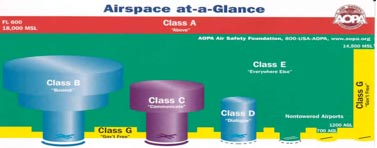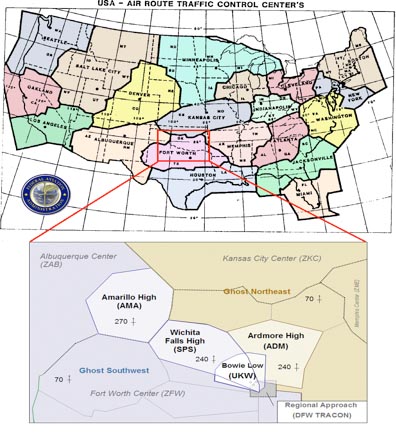Glossary of Aviation Terms | National Airspace System
National Airspace System | Paramount Business Jets
The National Airspace System is an intricate network of systems that involve the definitions of airspace both above and below you, as well as all information having to do with that airspace. Things like airports, air charts, navigation, instruments, weather, rules, and regulations are all part of the National Airspace System. Airspace is defined as any block of air at any given point or time above or below your head. The habitation and control of this airspace over a particular country is what we consider national. It extends 12 nautical miles off the coast of the United States and is controlled by the air-traffic control system.
The National Airspace System when talking about the actual airspace is broken down into 6 categories designated with a letter from "A" – "G" excluding "F" and is further divided up into two more categories being controlled and uncontrolled. Controlled airspace and any airspace that is under the authority of an air-traffic controller. Likewise, uncontrolled airspace in any airspace that is not under the authority of a controller. Class A airspace is always controlled and flight in it must be under instrument conditions. Class B airspace is the airspace that surrounds most airports people are familiar with, like JFK or Logan International. Class C and D airspace are reserved for the smaller, less traveled airports and airports involving heavy flight training. Class E airspace is any other airspace that is controlled that can surround and airport without a tower. Class G airspace is uncontrolled airspace and is subject to restrictions by weather or altitude.

Weather is another part of the National Airspace System. It plays a huge role in determining when a pilot can or cannot fly somewhere. It also gives us limitations and challenges when actually flying. The National Airspace System has developed a way for pilots to get weather briefs and weather information so that a pilot can be completely familiar with all aspects of his flight. Along with weather, publications such as the Airport Facility Directory (AFD) and aviation sectionals give pilots information about the areas they are flying in and the types of airspace expected to be encountered. The Federal Aviation Regulations, or FARs, define the dos and don'ts of the aviation industry, and the Airmen’s Information Manual defines everything in the National Airspace System.
The air-traffic control system also plays a huge role in the National Airspace System. For the first time in history, one might remember how on September 11, 2001, the United States shut down completely its airspace system, forcing all aircraft in the air to land and all aircraft on their way to the United States to turn around. Airports were filled with planes, and this was done solely with the help of the air-traffic control system. Divided into many areas, air-traffic control has authority over many aircraft on the ground, in the air, and even, in some cases, in their personal control space. More information about the National Airspace System can be found in the FAR/AIM, which is a publication put out by the FAA to give pilots standards and information. It can be located electronically online or at almost any book or pilot store.

Explore More Aviation Terminology
- EFIS | Paramount Business Jets
- IFR Flight Plan | Paramount Business Jets
- Vertical Separation | Paramount Business Jets
- True Airspeed | Paramount Business Jets
- Altimeter | Paramount Business Jets
- Fleet Manager | Paramount Business Jets
- Layover | Paramount Business Jets
- VFR Flight Plan | Paramount Business Jets
- Mach Number | Paramount Business Jets
